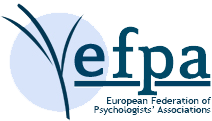MOBILITY
- Background and short history
The Treaty of Rome, signed over 50 years ago in 1957, was the founding treaty of the European Economic Community (EEC), the forerunner of the European Community and, now, the European Union. This Treaty laid down a commitment to the ’four freedoms’: freedom of movement of goods, services, capital and people. “Freedom to work anywhere in the European Community is one of the basic rights laid down by the Treaty of Rome”.
Free movement of people across the borders of European countries posed a major challenge, given the very diverse education, qualification and professional recognition systems. At first, in the 1960s there was an idealistic and ambitious goal to achieve harmonisation of the structure and content of professional education and training systems of the different European countries with a view to creating the conditions for free movement across the borders of Europe. This took the form of what was referred to as a ‘vertical’ approach to recognition of qualifications, (i.e. harmonisation of qualifications profession by profession), and required negotiation of virtually identical patterns of education for each profession across the member countries. The result was the creation of so-called ‘Sectoral Directives’ which required member countries to guarantee, for that profession, the ‘right of establishment’ i.e. the right to work across the countries of the European Community (EC). Harmonisation requires that the rules which apply in one country apply in all of the others and the sectoral directives therefore specified a common set of minimum standards on training and qualification requirements for the particular profession to apply across the countries of the EC. The process of harmonisation involved a detailed comparison of the education and training systems of different countries for a particular profession, followed by a lengthy process of consultation, negotiation and compromise in order to establish a European Standard for each profession.
As might be expected, these attempts to harmonise qualifications proved to be enormously time-consuming and complex. Sectoral Directives were achieved for seven professions only (architect, dentist, doctor, midwife, nurse, pharmacist, and veterinary surgeon), with agreement across all member countries of the content of courses, minimum length of study and training, and skills that a graduate in the field should possess. With the realisation that this challenge was ultimately unrealistic, the task of extending the process of harmonisation to other professions was abandoned. Instead, there was a gradual awareness within the European Commission that equivalence of qualification was more important than equality or harmonisation, and that a new approach would be required.
The new approach took the form of a system of mutual recognition based on equivalence rather than harmonisation, and resulted in the General Directive 89/48/EEC (Mutual Recognition of Higher Education Diplomas) which was introduced in December 1988 and took effect in January 1993. It aimed to introduce a system for the recognition of qualifications of those professions to which access is in some way regulated or restricted by the State and which require at least three years’ university level training. In countries where the profession of psychologist was regulated by law, psychologists were covered by the General Directive; these countries were required to develop procedures for evaluating the equivalence of qualifications, and facilitating recognition of competence and thus mobility.
The principle of mutual recognition through recognition of equivalence was formally introduced in 1989, and was followed over the next 15 years or so by a number of amendments and new Directives, as the EC struggled to find ways to achieve free movement within the Single European Market. Although this was essentially a ‘top-down’ political process, it relied on individual member states creating the mechanisms to evaluate equivalence and also having the will and the mutual trust and respect to accept the quality of education and training gained in member states. The first general system Directive (89/48/EEC), was followed by the second general system Directive (92/51/EEC), amended by 1999/42/EEC, and finally all Sectoral and General Directives were repealed and subsumed under the Directive 2005/36/EEC, which has also since been amended several times.
As a piece of consolidating legislation, Directive 2005/36/EC sets out three systems for recognition of qualifications: (i) automatic recognition for the seven professions for which training conditions have been harmonised (the ‘sectoral’ professions) (though problems can arise with changes in practice over time which may be appropriate in one member state, yet require negotiation across the EU); (ii) the general system for other regulated professions and (iii) recognition on the basis of professional experience for certain professional activities (e.g. the craft, commerce or industry sector). Under (ii) mutual recognition should be automatic where there is sufficient commonality of education and training; where there are significant differences in the education and training, the Directive requires that recognition be granted by the Member State after compensation in the form of either an adaptation period or an aptitude test. In recent years there have been various initiatives aiming to facilitate mobility by creating standards (the ‘common platform’) or qualification records (through the ‘EuroPass’). Mobility has also been pursued through the harmonisation of qualification frameworks in the Bologna Process.
- What happens in practice?
National governments are responsible for implementing the directive, usually through their government departments and their ‘competent authorities’. The ‘competent authority’ is responsible for evaluating qualifications of professionals who have received their education and training from another country, and determining their equivalence to the qualifications required in the home country. In countries where the profession of psychologist is regulated, the competent authority is normally a government department or agency. In countries where the profession of psychologist is not regulated, there is normally some form of registration, often through the psychologists association, which provides recognition of qualifications. In these countries, the national psychologists association, or other body, will serve as the competent authority.

